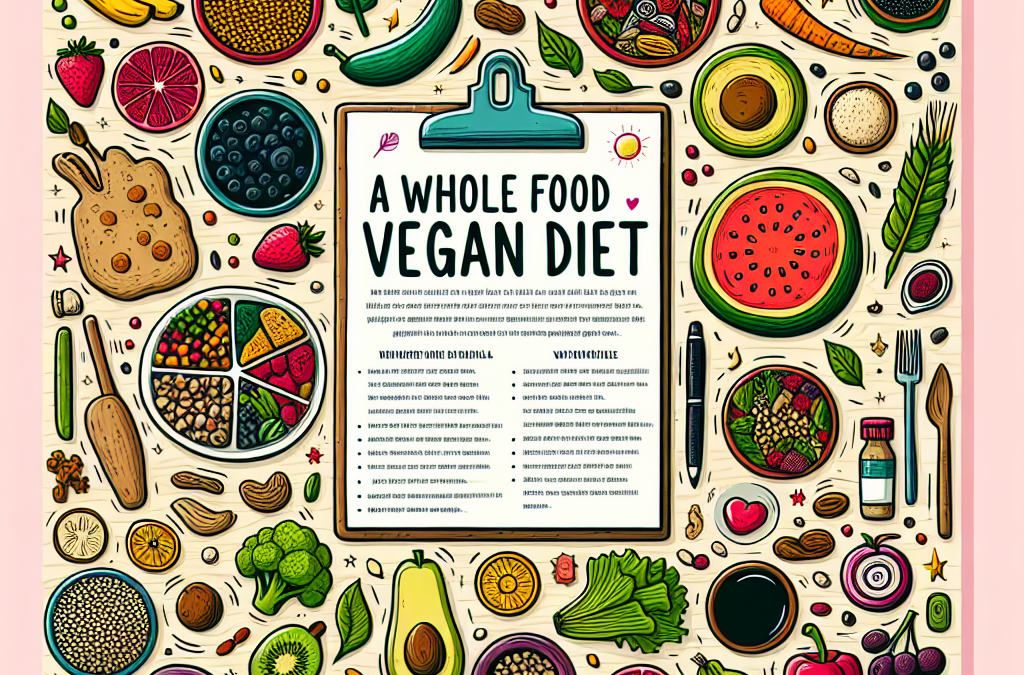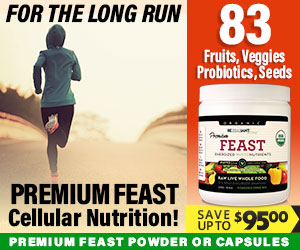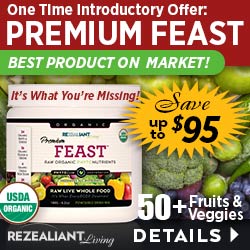Whole Food Vegan Diet Guide
- Benefits of a Whole Food Vegan Diet
- Essential Foods for a Whole Food Vegan Diet
- Meal Planning Strategies
- Coping with Challenges
Benefits of a Whole Food Vegan Diet
Health Benefits
When I first started my journey into a whole food vegan diet, the health benefits hit me like a ton of bricks. I noticed more energy, clearer skin, and significantly reduced digestion issues. It’s amazing how whole foods can rev up your body’s performance. Cutting out processed junk just makes you feel lighter, both physically and mentally.
This approach isn’t just about weight loss; it’s super rich in nutrients. Whole foods are packed with vitamins, minerals, and antioxidants. I often feel like I’m fueling my body with a premium grade of nutrients, and my immune system seems to appreciate this boost! Integrating plenty of greens, legumes, nuts, and seeds keeps me feeling vibrant.
Moreover, many folks find that a whole food vegan diet can help lower the risk of chronic diseases like heart disease and diabetes. My new lifestyle not only helps me feel fantastic but also reflects a growing body of evidence around preventing disease through nutrition. It’s a no-brainer for me!
Environmental Impact
Going whole food vegan also resonates with my values around sustainability. The environmental impact of our food choices is huge! By choosing a plant-based diet, I’m contributing to reducing greenhouse gas emissions, conserving water, and promoting a healthier planet. It’s part of a larger movement towards eco-conscious living.
I remember the first time I dived deep into the statistics about animal agriculture—it blew my mind! The resources we’re consuming and the waste produced are staggering. By making this switch, I feel like I’m doing my part to protect the Earth, and that adds an extra layer of satisfaction to my meals.
Plus, when I shop for local produce, I’m supporting local farmers and the economy. I’ve forged wonderful relationships with local vendors who share my passion. It feels good to know where my food comes from and to be part of a community that values sustainable practices.
Emotional Well-Being
On a personal level, adopting a whole food vegan diet has greatly impacted my emotional health. There’s something very empowering about making conscious food choices and nurturing my body with wholesome ingredients. I feel more connected to what I’m eating, and cooking has become a joyful activity rather than a chore.
Since embracing this lifestyle, I’ve also become more mindful and intentional. This practice spills over into other areas of my life—it’s all about balance, right? Cooking vibrant, colorful meals makes me feel creative and sparks joy during my day. It also opens the door to experimenting with flavors and ingredients I’d never considered before.
Lastly, I’ve formed new friendships and a sense of community with others who share my passion. Whether it’s joining meetups, participating in cooking classes, or sharing recipes online, I’ve built a supportive network. This has made my journey even more fulfilling and enjoyable!
Essential Foods for a Whole Food Vegan Diet
Fruits and Vegetables
Starting with fruits and veggies seems obvious, but they are the real stars of a whole food vegan diet. I try to stock my kitchen with a rainbow of colors—each hue typically represents different nutrients. Fresh is the best, but frozen veggies are my secret weapon, especially for busy days.
I love seasonal produce; it feels like the universe is providing me with a variety of options to keep meals interesting. For me, farmers’ markets are a goldmine. I’ve had some fantastic encounters chatting up vendors about their produce, and I often come home with some interesting finds!
Don’t forget about herbs and spices! They amp up the flavor and health benefits. Fresh basil on a salad or a sprinkle of turmeric in your dishes does wonders! Incorporating these into my meals makes healthy eating a pleasurable experience.
Whole Grains and Legumes
Whole grains and legumes are foundational elements in my diet. Brown rice, quinoa, oats, and lentils not only provide sustenance but also keep hunger at bay. I love making big batches of grains, so I have them ready for quick meals throughout the week.
Legumes are fantastic protein sources that are versatile, filling, and oh-so-good for you. Black beans in a taco bowl or chickpeas blended into hummus are among my staples. They’re cheap, too! Cooking dried beans is super easy and saves a ton of money compared to buying canned goods.
When I’m feeling adventurous, I try new grains like farro or millet. They add different textures and flavors to my dishes. Whole grain pasta is another go-to of mine, especially for those comfort-food cravings while sticking to my whole food mantra.
Nuts and Seeds
Nuts and seeds have become my quick go-to snacks. Whether it’s munching on almonds or tossing chia seeds into my smoothies, they pack a punch of flavor and nutrients. They are also great sources of healthy fats—something we need!
Almond butter and tahini are my favorite spreads. I often slather them on whole grain toast paired with banana slices for a quick morning boost. Plus, they add nice creaminess to my salads and grain bowls.
Experimenting with nut milk has been an enjoyable journey too. I’ve tried making almond, cashew, and coconut milk from scratch. There’s something rewarding about crafting my own beverages, and they taste way better than store-bought options.
Meal Planning Strategies
Batch Cooking
When I first embraced this whole food vegan lifestyle, batch cooking became a game-changer for me. Spending a few hours on the weekend prepping grains, veg, and sauces keeps my weeknight dinners a breeze! Cooking in bulk means I’ve got ready-to-eat meals when hunger strikes.
I generally roast a bunch of veggies and whip up a pot of quinoa or lentils. On Sundays, I’ll make a big pot of stew that lasts me for several days. Just toss it all together, season it well, and let it simmer away. It saves so much time during those hectic weekdays.
Get an Amazing Discount on Best Organic SuperFood Product!
Don’t forget to store them in portion-sized containers. It makes grabbing meals on the go super easy! I’m also a fan of using clear containers—seeing my options helps me avoid the dreaded fridge clutter.
Keeping a Grocery List
One of my secrets to sticking to my whole food vegan diet is a solid grocery list. I’m the queen of lists—seriously, they help me avoid stupid impulse buys. Before I shop, I’ll jot down everything I need based on my meal plans for the week.
This practice keeps my fridge stocked with fresh produce and prevents any last-minute fast food runs. Plus, being organized helps me experiment with new recipes and ingredients, as I always have what I need on hand.
Finally, I make sure to adjust my list based on what’s in season and what’s on sale. Supporting local markets while being budget-conscious is key. It feels great knowing I’m spending smartly while nourishing myself!
Incorporating Variety
One thing I’ve learned through my journey is that variety is essential for long-term sustainability. Eating the same meals can get boring pretty quick, so I love trying out new recipes or ingredient combinations each week. I didn’t realize how fun it could be to explore plant-based cooking!
Cookbooks and food blogs are my best friends. I have a collection that I often flip through for inspiration or a kick start when I’m unsure what to make. There’s an overwhelming amount of ideas out there! It’s all about creativity and keeping your meals exciting.
Above all, I try to mix up my cuisines! One night, I might whip up an Indian-inspired lentil curry, and the next, a Mediterranean quinoa salad. It keeps my taste buds engaged and makes me look forward to every meal.
Coping with Challenges
Overcoming Social Situations
Adopting a whole food vegan diet can sometimes feel isolating in social settings. Trust me, I’ve been there! But I’ve learned to navigate these situations wisely. First things first, I always communicate my dietary needs ahead of time when attending events or gatherings.
For me, bringing a delicious dish to share not only ensures there’s something for me to eat but often sparks great conversations. It’s a fun way to introduce others to plant-based meals, and you’d be surprised by how many folks are curious!
When dining out, I’ve learned to scout menus ahead of time and pick places with solid vegan options. And if all else fails, I just make a little meal in advance and take it with me. That way, I’m always prepared and can enjoy myself despite any challenges!
Dealing with Cravings
Let’s be real; cravings are real! When I first started my whole food vegan journey, I craved junk food like crazy. Understanding these cravings helped me. Sometimes, I’d reach for a healthier version of the treat I was craving—like oven-baked sweet potato fries instead of greasy ones.
I also learned to stay hydrated and snack on healthier kits to curb my cravings. Staying filled with energy-dense foods keeps the hunger pangs at bay. And when I do indulge in a craving, I try to ensure it’s still aligned with my whole food values.
Lastly, I’ve discovered the importance of mindfulness. Instead of mindlessly binging, I take a moment to savor what I’m eating, really focusing on the flavors and textures. This practice helps me enjoy every bit, and often, I find I don’t need as much to feel satisfied.
Maintaining Motivation
Staying motivated can sometimes feel like a struggle. I had days when I slipped back into unhealthy habits, and that’s okay. I learned that accountability is key. Keeping a food journal helps me track how I feel with what I eat and allows me to celebrate my progress.
Connecting with online vegan communities has also helped immensely. I share recipes, swap success stories, and get inspired by others’ journeys. Social media can be a powerful motivator when used positively!
Lastly, setting personal goals keeps me engaged. Whether it’s trying one new recipe a week or learning about a new ingredient, having something to strive for adds excitement. Remembering why you started this journey is essential—it keeps the fire burning!
Frequently Asked Questions
1. What is a whole food vegan diet?
A whole food vegan diet focuses on consuming whole, unprocessed plant foods. It consists of fruits, vegetables, whole grains, legumes, nuts, and seeds while avoiding processed foods, added sugars, and animal products.
2. How do I get enough protein on a vegan diet?
Lots of plant-based foods are packed with protein! Incorporate beans, lentils, chickpeas, quinoa, tofu, and tempeh into your meals. Nuts and seeds also provide great protein and healthy fats!
3. How can I make sure I’m getting all my nutrients?
Vary your food choices and include a wide range of fruits, vegetables, whole grains, and legumes in your diet. Consider taking a B12 supplement, and you might want to check in with a nutritionist to ensure you’re meeting all your nutrient needs.
4. What’s the best way to transition to a whole food vegan diet?
Start slowly! Try incorporating more whole food-based meals into your diet while phasing out processed foods. Explore new recipes, and don’t hesitate to ask for support from online communities as you make the switch!




